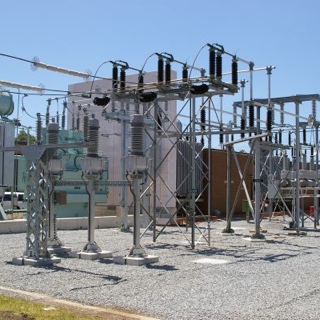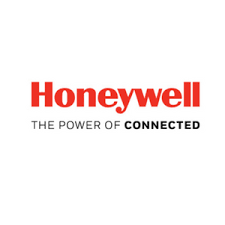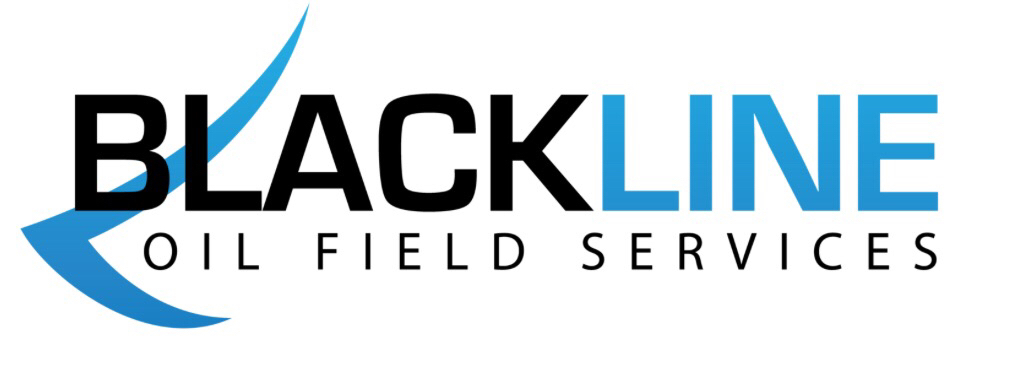Information
-
Document No.
-
Audit Title
-
Client / Site
-
Conducted on
-
Prepared by
-
Location
-
Personnel
-
Client / Site
-
Region
-
Contractor/s
-
Job Description
-
Date
-
Time
1. Site Risk Management
-
Is a relevant SWMS available and a Site Risk Assessment (JSA) completed for the work?
-
Has the JSA been signed and dated daily and the SWMS identified?
-
Have sub-contractors (e.g. Traffic Management) been inducted onto the site and signed onto the JSA?
-
Has the Traffic/Pedestrian Management Plan been identified/created and available on site and documented on the JSA?
-
Overall, is the JSA adequate for the worksite?
-
Does the JSA meet the KPI standard?
2. Personnel Protective Equipment
-
Is approved PPE clothing worn and is wrist to ankle coverage maintained?
-
Is approved safety footwear worn?
-
Is other appropriate PPE utilised and in good condition? (e.g. hard hats, hearing and eye protection)?
3. Traffic and Pedestrian Management
-
Has the appropriate Traffic and Pedestrian Management Plan been identified, and does it meet all requirements?
-
Does the actual traffic/pedestrian layout reflect the Traffic/Pedestrian Management Plan?
-
Is pedestrian traffic safely controlled through the worksite?
-
Are traffic signs and devices legible and undamaged?
4. Forms/Documentation
-
Does the job file contain an Application for EAP / HV Suppression?
-
Does the job file contain switching instructions?
-
Does the job file contain clearance documents?
-
Are all appropriate forms available? (e.g. EAP, SFT, PTW)
-
Are required reference materials available? (Operations Manual, Switchgear Operating Manual, Green Book)
5. Skills and Competency
-
Do all personnel have Passports on site?
-
Is all training and are all authorisations current for the functional role of the Passport holder?
-
Are all personnel licensed/registered for their functional role?
-
Are apprentices adequately supervised?
-
Does the training meet the KPI standard?
6. Vehicles/Plant
-
Are all plant operators licensed as required?
-
Are logbooks available for all plant on site and have they been maintained appropriately?
-
Are EWPs within the electrical test due date?
-
Are EWPs within the weight test due date?
-
Have pre-start checklists been completed?
-
Are all vehicles on site registered?
-
Are all vehicles/plant within their service range?
-
What is the general condition of the vehicles/plant (cleanliness)?
-
Is all equipment carried on vehicles adequately secured?
-
Is there appropriate identification on contractor vehicles?
7. First Aid
-
Is there an intact First Aid kit?
-
Is the kits location marked on the vehicle?
-
Do the contents appear to be complete, in good condition and within expiry dates
8. Tools and Equipment: Testing and Condition
-
Are all electrical tools and PETE items within their test date range?
-
Is all electrical test and measurement equipment in test date?
-
Has any test equipment been modified? (e.g. probes extended)
-
Are gloves and sleeves in test date?
-
Are HV operating gloves, sleeves and mats in test date?
-
Are HV mats and covers in test date?
-
Are HV sticks in test date?
-
Are the gas bottles within expiry date and stored appropriately?
9. Environment and Hazardous Goods
-
Are environmental risks and controls identified on the JSA?
-
Are the environmental controls identified on the JSA being implemented on site?
-
Are all fuels and/or chemicals properly marked?
-
Are all fuels and/or chemicals stored in containers that are in good condition (i.e. no leaks present)?
-
Are erosion and/or sediment control structures in place and stable?
-
Are erosion and/or sediment control structures located between source (i.e. spoil) and receptor (i.e. drain)?
-
If applicable (i.e. if works will take longer than 24hrs), is waste (inc. soil) stored suitably (i.e. sealed, covered, bunded)?
-
Is the waste area well maintained and tidy?
-
Does any mobile plant have adequate drip tray coverage?
-
Is noisy plant and machinery switched off when not in use?
-
Are dust generating activities (i.e. cutting), being managed correctly i.e. water hoses attached to cutting equipment?
-
Are the drip lines of any trees on site free of large/heavy equipment?
-
Is bushfire mitigation equipment available (e.g. knapsack, rakes, permits)
10. Working at Heights
-
Is the correct fall prevention equipment used?
-
Are harnesses, pole belts, lanyards and any other fall prevention equipment in test date?
-
Are Rescue Kits available, in test and in position?
-
Are ladders in use in an adequate condition?
-
Are ladders in use setup correctly?
11. Worksite/Work Practices
-
Have the required communications been made with Network Control prior to and during switching operations?
-
Has the station master auto reclose been suppressed (where available)?
-
Are Safe Approach Distances maintained?
-
Is the site tidy with no obvious tripping or other hazards?
-
Adequate cover utilised? (e.g. mats, LV covers, HV covers, etc.)
-
Plant and equipment appropriately set up? (e.g. trucks earthed / bonded, outriggers in use, etc.)
-
Are all isolation points tagged and locked, where applicable?
-
Are appropriate operational Earths/Bonders attached in correct locations and in an adequate condition?
-
Was the condition of switchgear inspected before & after operation?
-
Has safe to earth test been performed (modiewark)?
-
Are adequate operational and work party earths/bonders in place
-
Has the Operator discussed with the Recipient in Charge the access required for work to be done?
-
Does the Access Permit cover the required access to safely carry out the work?
-
Has the Access Authority been filled out correctly?
-
Has the Operator adequately explained to the RIC & Work Party the minimum requirements? (e.g. Apparatus covered, Isolation points, Earths, Nearest Live Apparatus)
-
Has the Work Party been asked the four questions required at issue.
-
Has the Access Authority issue details been advised to the Control Room?
-
Has the switching and the Access Authority issue been recorded in the station?
-
Has the Operator checked the network fit for service prior to restoring supply?
12. Hazards Identified
-
Biological - Potential for harm caused by exposure to biological hazards, e.g. flora , fauna, marine, bacteria, livestock, flu
-
Climate - Potential for harm or damage to equipment/ assets resulting from exposure to an extreme climatic event e.g. drought, fire, flood, winds, rain, snow, lightning, fog
-
Electrical - Potential for harm or damage equipment/ assets resulting from exposure to electrical sources e.g. HV, LV, ELV, induction, static, magnetic fields
-
Manual Handling / Ergonomics - Potential for harm associated with physical stress on the human body i.e. exertion, excessive repetitive movement; poor posture e.g. load handling, bending, twisting, repetitive workplace task
-
Gravity - Potential for harm or damage equipment/ assets resulting from a person/object falling or moving unexpectedly e.g. fall at level / heights/ depth, falling object, slope stability
-
Land / Water - Potential impact on the natural environment due to the use/ management of land / water e.g. modification/change to natural environment, pollution, land closure, vegetation clearing, water diversion
-
Mechanical - Potential for harm or damage to equipment/ assets resulting from exposure to sources of mechanical energy e.g. cutting, grinding, rotating equipment, projectile, pinch point, stored energy
-
Behavioural Actions - Potential for harm to people and equipment/assets associated with undesired behavioural actions e.g. not following policies/procedures, wilful misbehaviour, alcohol/drug use, fatigue, shift work
-
Pressure - Potential for harm to people and equipment/assets associated with the sudden release of a source of pressure e.g. compressed air or gas , hydraulics
-
Radiation - Potential for harm to people and equipment/assets associated with exposure to or contact with radiation waves from either natural or manufactured sources e.g. UV, infrared, X-Ray, laser, radioactive dust
-
Compliance /Cultural - Potential for harm to people and equipment/assets associated with not complying with internal, external & legal expectations and social-cultural expectations e.g. legal, business & stakeholder expectations, economic, cultural heritage
-
Noise - Potential for harm resulting from prolonged exposure to excessive noise e.g. noise from continuous sources & via impact
-
Substances - Potential for harm to occur as a result of exposure to chemicals whose properties are normally controlled e.g. asbestos, lead, SF6, Oils, dust (inhalable/respirable). Refer to chemical Inventory if required
-
Fire / Thermal - Potential for harm or damage to person or equipment/ assets resulting from exposure to fire / hot surfaces e.g. fire from ignition of bush land/ equipment, explosion, combustible materials, gas / acetylene torches
-
Vehicle / Transport - Potential for harm or damage to person or equipment/ assets resulting from the use/operation of vehicles or any mode of transpiration e.g. vehicles, aircraft, construction and maintenance vehicles including cranes and forklifts
-
Waste - Potential impact on the environment due to the inadequate management/disposal of waste e.g. hazardous/prescribed waste (e.g.: asbestos, oil, contaminated water), non hazardous waste, office paper/cardboard, biological
-
Work Environment - Potential for harm resulting from hazards associated with workplace conditions e.g. housekeeping, inadequate design, impact to pedestrian (broken ground, slippery conditions, demarcation), ventilation, confined space, travel health
-
Comments
-
Overall Audit Rating
- 1
- 1.5
- 2
- 2.5
- 3
- 3.5
- 4
- 4.5
- 5
- 5.5
- 6
- 6.5
- 7
- 7.5
- 8
- 8.5
- 9
- 9.5
- 10












